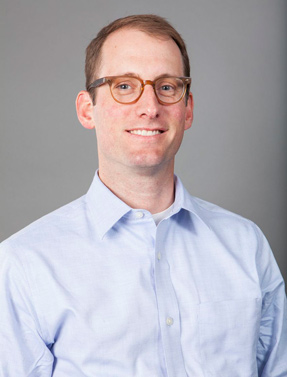A Powerful Proposal To Increase Groundwater Knowledge In Wyoming
 The Latin phrase “Scientia potentia est” may not ring a bell, but its translation should: knowledge is power.
The Latin phrase “Scientia potentia est” may not ring a bell, but its translation should: knowledge is power.
The oil and gas industry spends millions every year to expand its knowledge of underground energy reserves. That is because better geologic knowledge is powerful stuff, it can mean the difference between a very profitable well or a very expensive dry hole.
Doesn’t it make sense then for the industry to also invest in better knowledge of local water resources? Investing a small amount in understanding local groundwater quality before you drill, and following up to monitor whether that water is potentially impacted once energy production commences is also incredibly powerful for local residents, state regulators and the industry alike.
Wyoming oil and gas regulators have proposed a testing program that aims to do exactly this – establish a groundwater quality baseline in areas where oil and gas development is planned, and then follow up with two sets of tests to monitor for potential impacts from this specific activity.
Now open for public comment until October 7, the Wyoming draft rule would, on the whole, create a strong, scientifically valid groundwater testing program. This program would provide transparency and a first line of defense for local residents to help detect any groundwater contamination that may result from oil and natural gas development. It will help the state meet its obligations to protect groundwater resources and public health. And it will offer cheap insurance for industry if groundwater contamination that exists before drilling begins is mistakenly attributed to operators.
Wyoming’s groundwater testing proposal has several strong suits. It contains no arbitrary cap on the number of water wells tested and ensures testing happens within a scientifically appropriate distance from development. It relies on state oversight including technical experts at the Wyoming Oil and Gas Conservation Commission (WOGCC) and the Wyoming Department of Environmental Quality. And it includes a strong, universally applied Sampling and Analysis Plan (SAP) that ensures an “apples to apples” comparison of results. To our knowledge Wyoming’s proposed SAP is the most detailed guidance provided by any state regarding how private water wells should be sampled.
Meanwhile, Wyoming’s proposed program would do all this without costing producers any more than they have to spend to comply with other states’ less rigorous programs.
Governor Mead, his staff, and the WOGCC deserve a lot of credit for leading this initiative.
While the framework is strong, there are still a few issues that deserve attention. Based on feedback it received during an earlier, informal public comment period, the WOGCC made several changes to the draft version of rule. At least two changes that have been requested by industry representatives could be problematic.
Dissolved Gasses: The WOGCC’s original draft rule included two levels of dissolved methane with differing requirements: a level of 1 milligram per liter (mg/l) to trigger further scientific analysis of groundwater and a 10 mg/l level to trigger immediate notification of landowners and regulators. At the request of industry, both have been changed to 10 mg/l. This is a major flaw that can and should be fixed. Weakening the scientific analysis trigger by a factor of 10 provides inadequate protection. It would fail to ensure that potential water contamination that is caused by drilling is caught quickly. Both the Colorado Oil and Gas Conservation Commission’s rule and the Colorado Oil and Gas Association’s voluntary program include a 1 mg/l level to trigger further scientific analysis. A weak 10 mg/l initial trigger has the potential of subverting the purpose of the groundwater testing program – to better understand potential drilling impacts as quickly as possible so that they may be addressed.
Master Plans: The rule has been amended to allow developers to seek approval for “master plans” that would cover multiple wells over potentially large geographic areas. If these plans are simply a way to better coordinate the required testing protocols with a company’s drilling program, to improve data management or to seek efficiencies in submittals to the WOGCC, this could be positive. However, these master plans should in no way undermine the strong, well-by-well approach taken in the larger rule. Mandating that at a minimum these plans are open for public review could help address some of these issues.
EDF will continue to advocate for these needed improvements as this rule moves toward a hearing scheduled for October 15. In the meantime, we encourage you to exercise your power and comment as well.











3 Comments
Hi Jon,
It would be great if your web team had a way to embed Social Media connectivity on your blog pages so that readers like me could RT or promote this page on G+/Facebook/Twitter!
Thanks,
Sid
I agree. You need ways to make it easier to share your stories as any time anyone in the environmental movement has something positive to say about the oil and gas industry, it’s something the world needs to hear… because no one will believe it via word of mouth alone!
Thanks for the feedback. We love it when readers share our content! You should be able to easily share blog posts to Facebook, Twitter, Google+, and a variety of other social media platforms by clicking on the “share” buttons at the bottom of each individual post.
– Mica Vehik, EDF Communications Director, US Climate and Energy